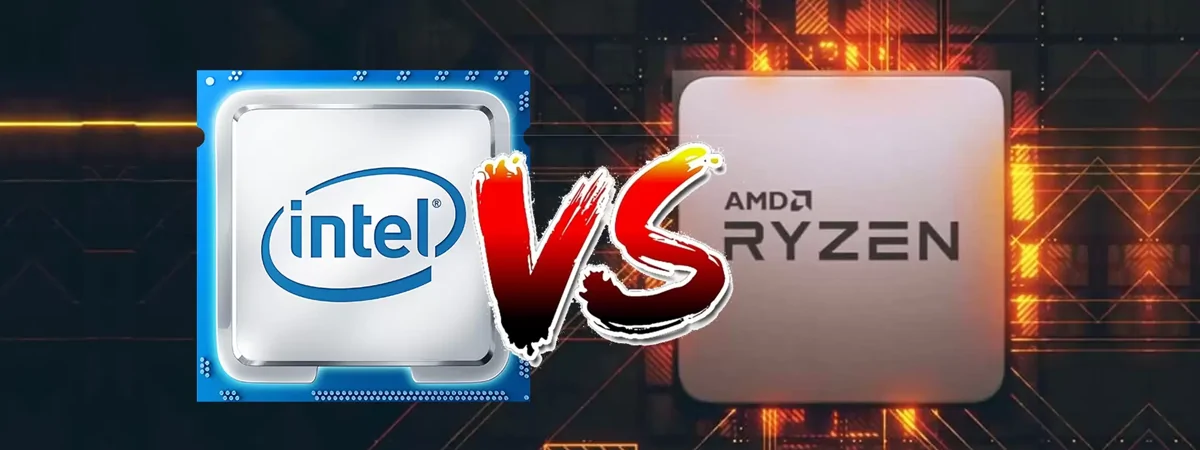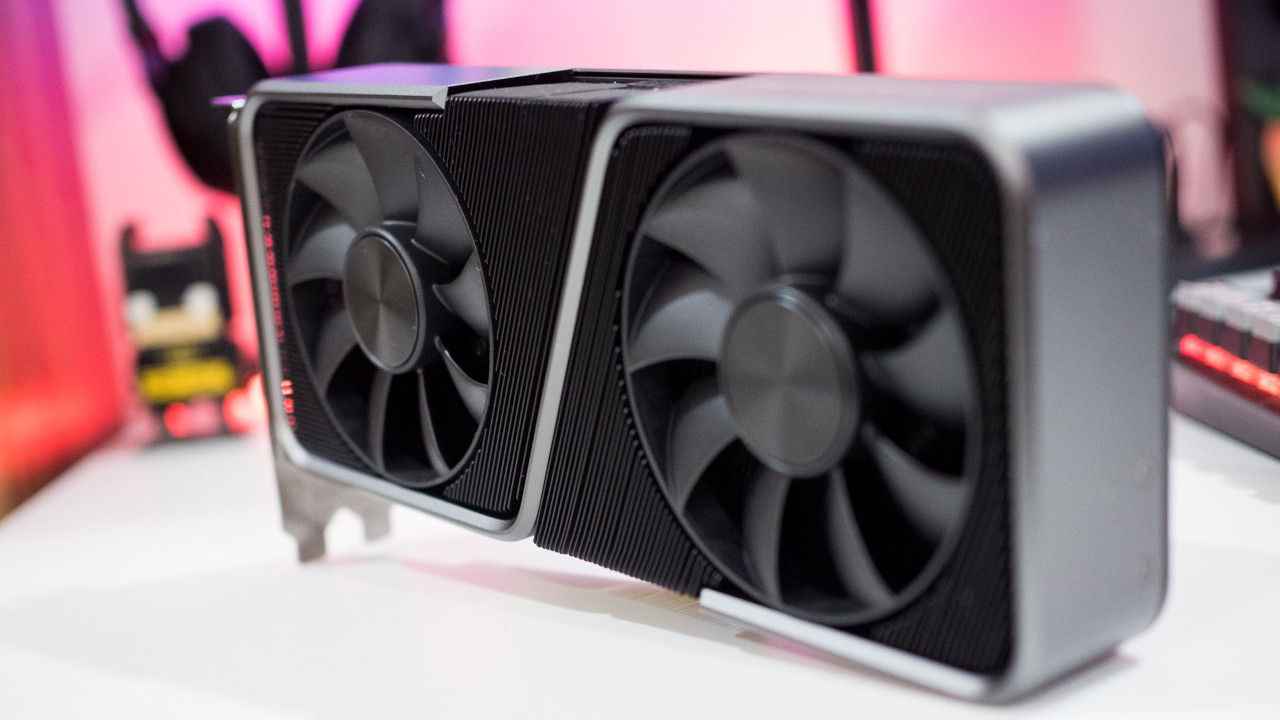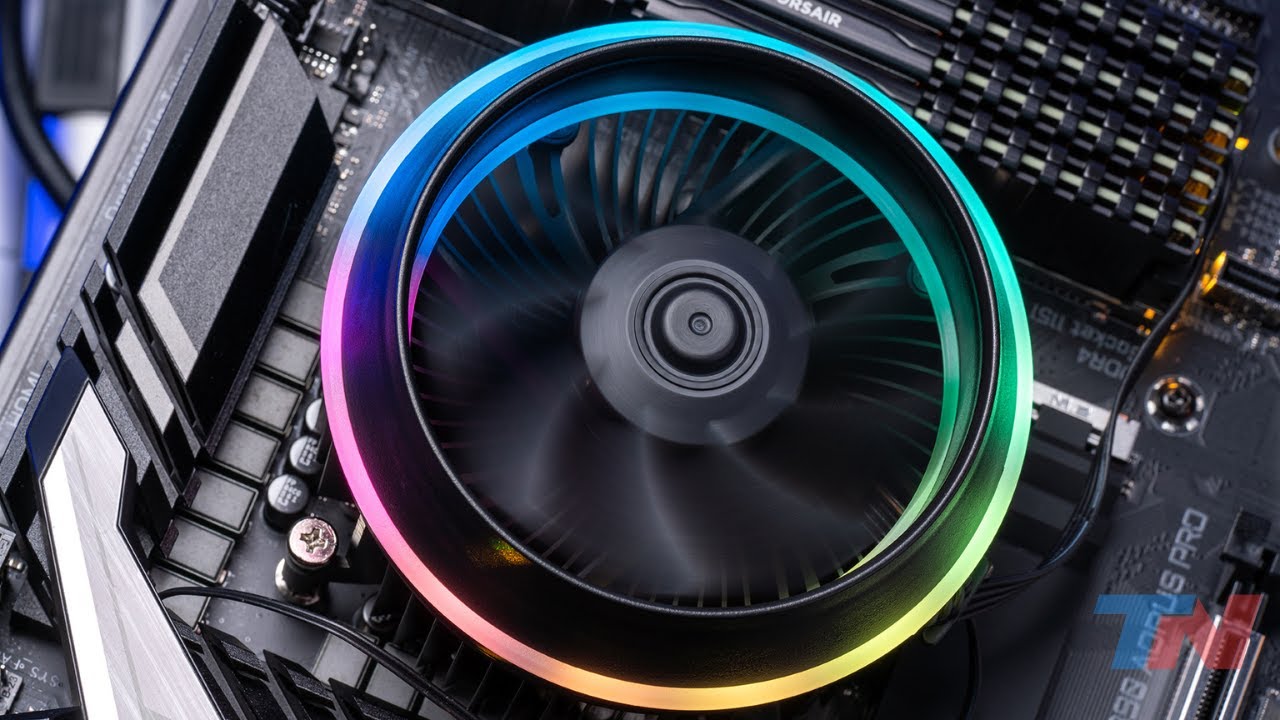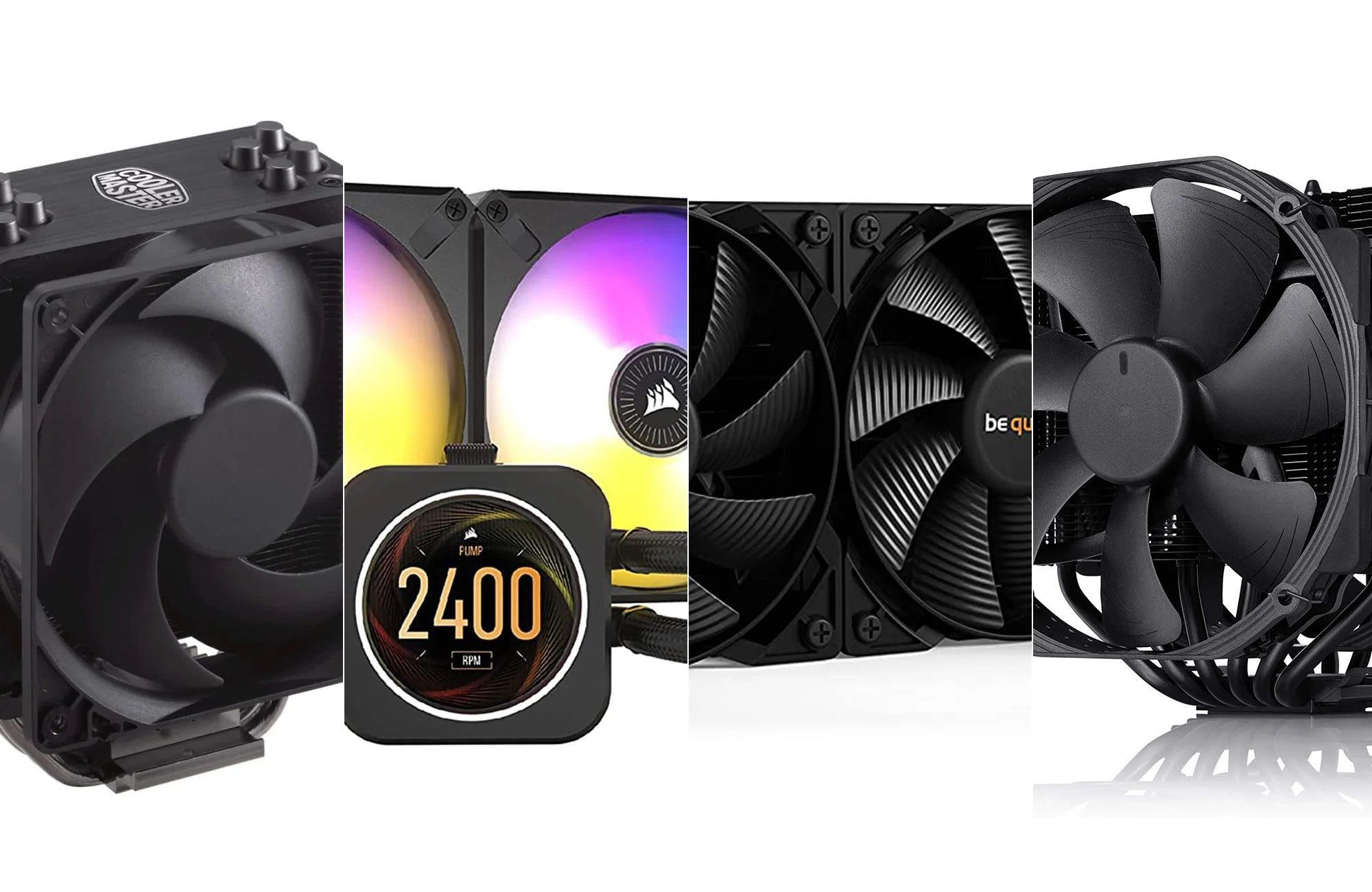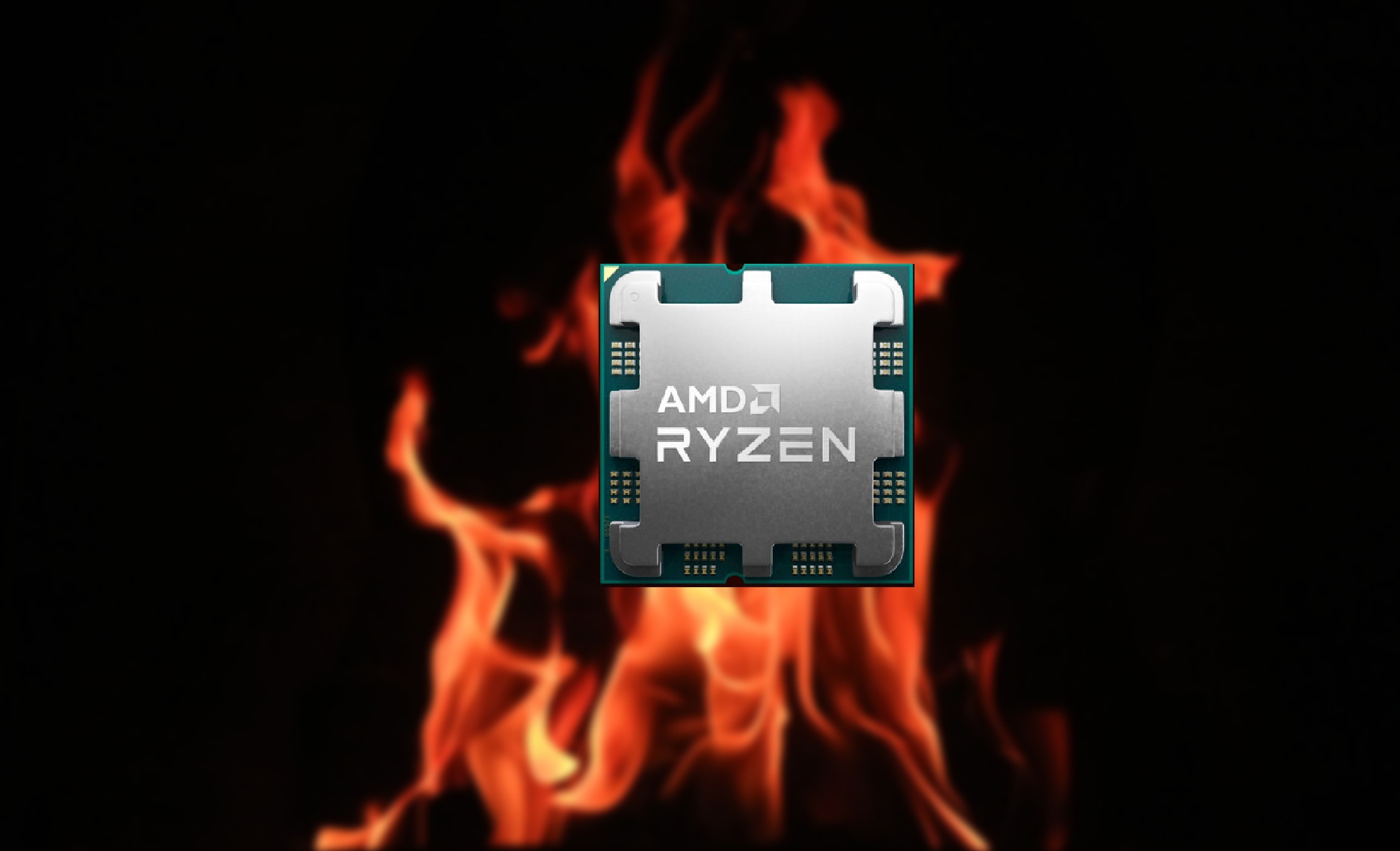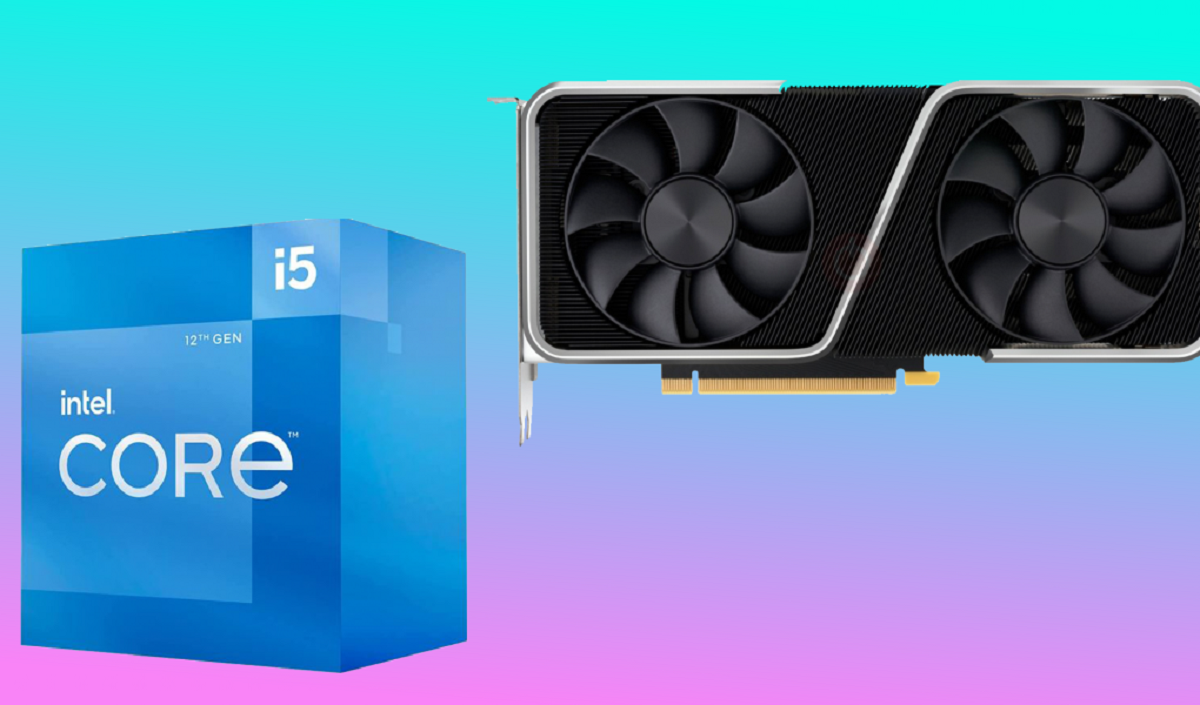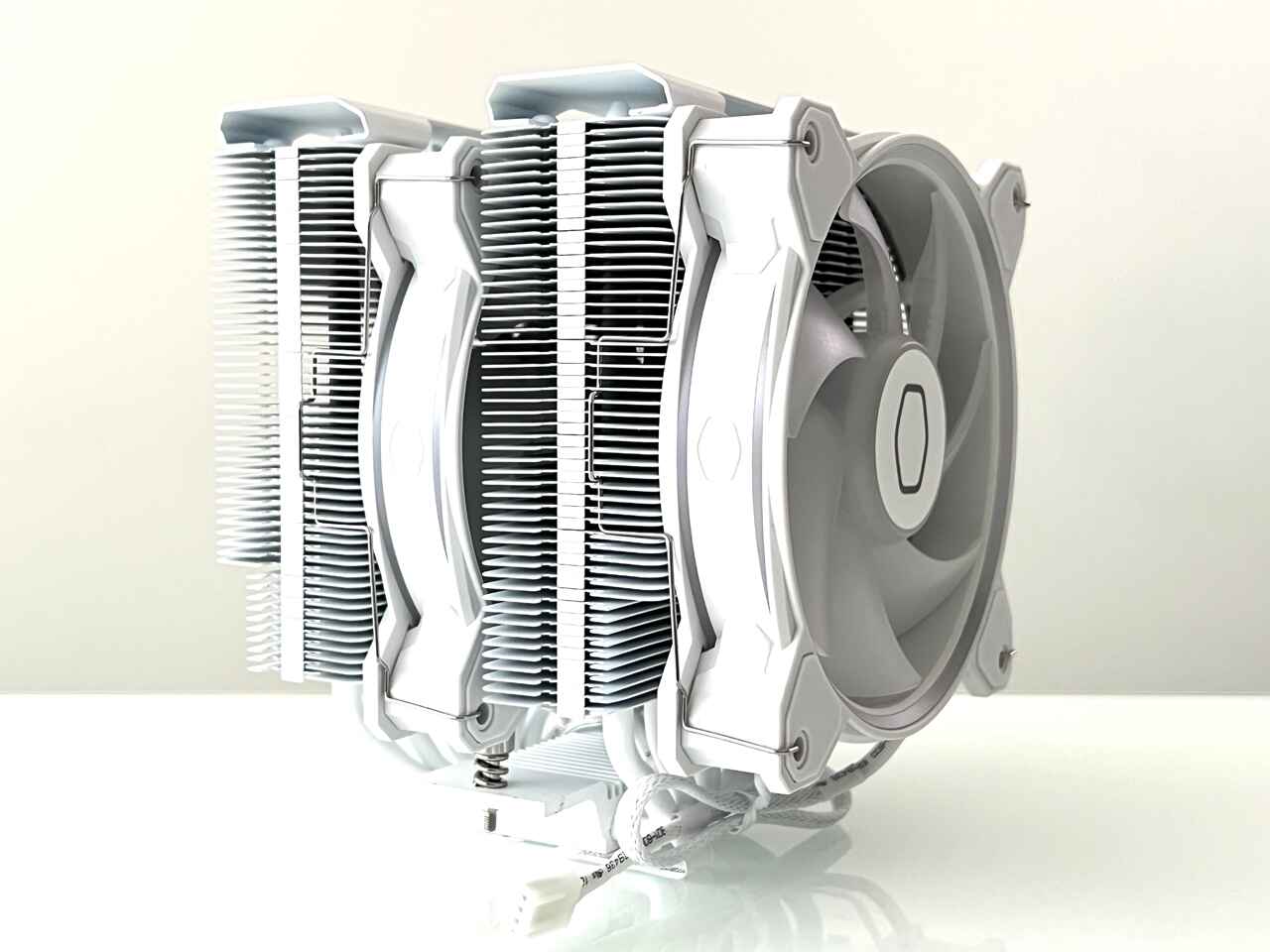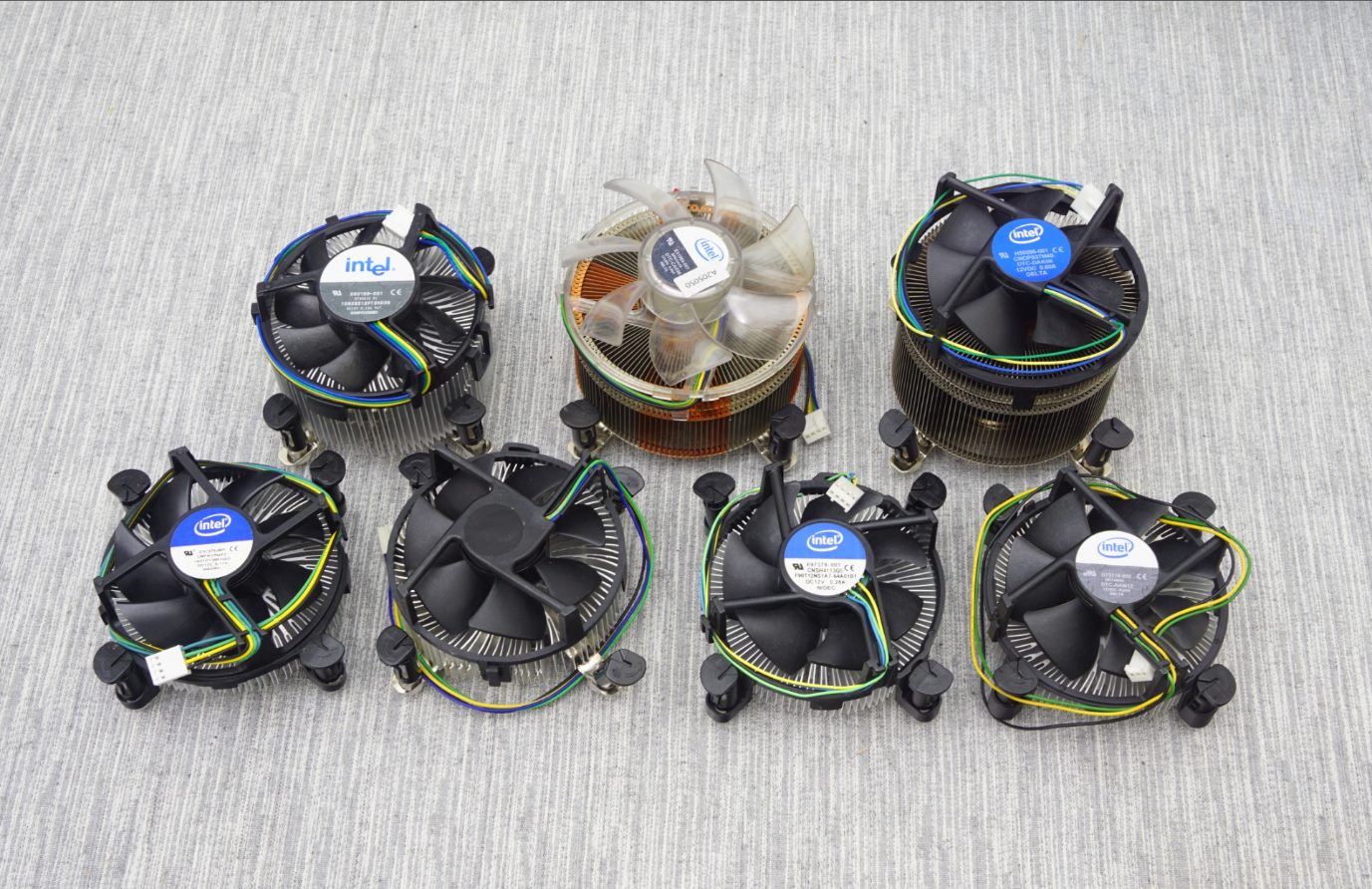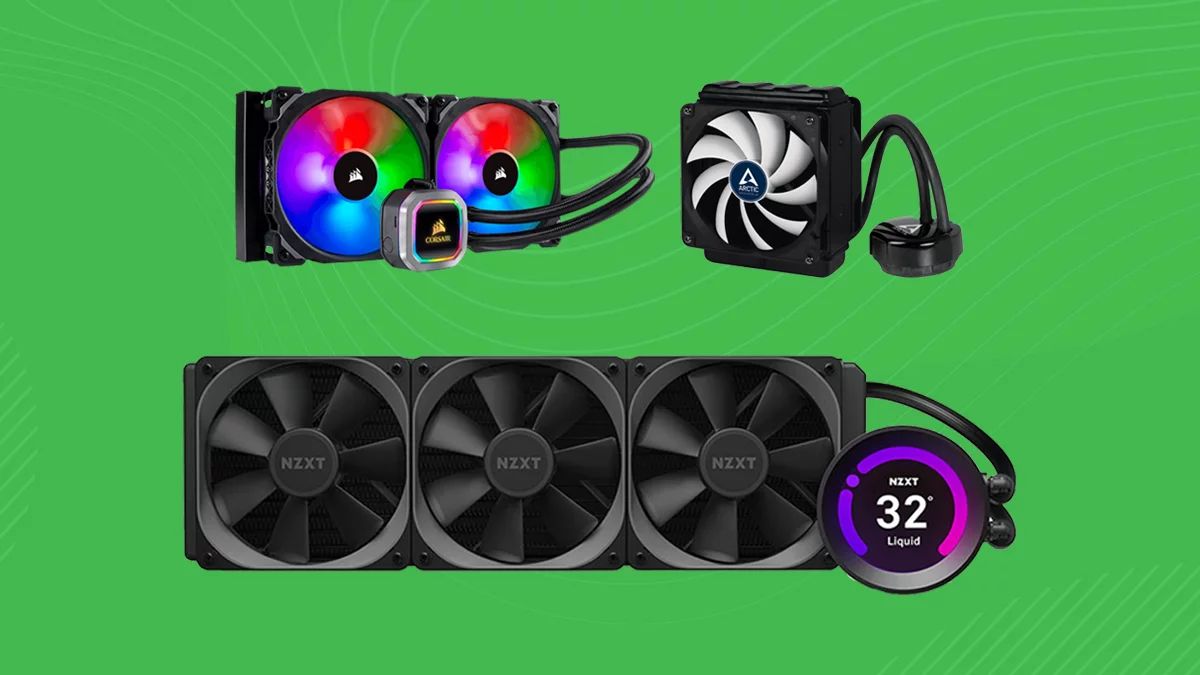Introduction
When it comes to choosing a central processing unit (CPU) for your computer, two prominent names dominate the market: AMD and Intel. Both companies have a long-standing reputation for manufacturing high-performance CPUs that power a wide range of devices, from personal computers to servers. Choosing the right CPU for your needs can be a daunting task, as there are multiple factors to consider, such as performance, price, power efficiency, and compatibility with software and hardware.
In this article, we will delve into the world of CPUs, exploring the differences and similarities between AMD and Intel processors. By understanding the unique features and strengths offered by each brand, you will be better equipped to make an informed decision when purchasing your next CPU.
Before we dive into the comparison, it’s important to have a basic understanding of what a CPU is and how it functions. The CPU, also known as the brain of the computer, is responsible for executing instructions and performing calculations necessary for the operation of software and applications.
Now, let’s explore the architecture of AMD and Intel CPUs. Both companies employ different design philosophies and approaches to cater to different market segments and user requirements. Understanding these differences will provide insights into the varying performance levels and features of their products.
As we embark on this journey, keep in mind that there is no definitive answer to the question of which CPU is better – AMD or Intel. It ultimately depends on your specific needs, budget, and preferences. By weighing the pros and cons of each brand, you can choose the CPU that best suits your requirements and provides optimal performance for your computing needs.
What is a CPU?
A CPU, or Central Processing Unit, is the primary component of a computer that performs most of the processing inside the system. Often referred to as the “brain” of the computer, it is responsible for executing instructions and performing calculations necessary for the operation of software and applications.
The CPU acts as the control unit of the computer, coordinating and managing the various hardware components to carry out tasks. It processes data and commands by fetching instructions from memory, decoding them, and then executing them to produce the desired results.
At its core, a CPU consists of one or more silicon chips known as microprocessors. These microprocessors contain millions, and in some cases billions, of transistors, which are tiny electronic switches that control the flow of electrical current.
The performance of a CPU is primarily determined by its clock speed, measured in gigahertz (GHz). A higher clock speed indicates that the CPU can execute instructions and calculations at a faster rate.
Additionally, CPUs also possess multiple cores, allowing them to perform multiple tasks simultaneously. Each core is essentially a separate processing unit within the CPU, capable of executing instructions independently. CPUs with more cores offer better multitasking capabilities and improved performance in applications that can utilize multiple cores.
The performance of a CPU is not solely dependent on clock speed and core count. Other factors, such as cache size, architecture, and instruction sets, also play a crucial role in determining the overall capabilities of the CPU.
Cache memory, often referred to as CPU cache, is a smaller and faster memory unit integrated into the CPU. It stores frequently accessed data and instructions, improving the CPU’s access speed and efficiency.
The architecture of a CPU refers to its design and organization of internal components. Different CPU architectures offer varying levels of performance, power efficiency, and compatibility with software and hardware.
Instruction sets are a collection of commands that a CPU understands and can execute. Different instruction sets enable CPUs to perform different types of operations and support specific software or programming languages.
Understanding the basics of a CPU is essential to navigate the complex world of computing and make informed decisions when choosing between AMD and Intel processors. In the following sections, we will explore the architecture, performance, price, power efficiency, and other factors to determine which CPU is a better fit for your needs.
CPU Architectures: AMD and Intel
AMD and Intel, the two leading CPU manufacturers, employ different architectures that set their processors apart. These architectural differences influence the performance, power efficiency, and compatibility of their respective CPUs.
AMD processors are known for their innovative architecture, known as Zen, which has undergone several iterations, including Zen, Zen+, Zen 2, and the latest Zen 3. Zen-based CPUs have brought AMD back into the competitive landscape, offering remarkable performance improvements and challenging Intel’s dominance.
The Zen architecture features multiple cores with simultaneous multithreading (SMT) capabilities, allowing for efficient multitasking and improved performance in software that can utilize multiple threads. Additionally, Zen CPUs have larger cache sizes, reducing data latency and enhancing overall performance.
Intel, on the other hand, employs the Core microarchitecture, which has also seen several generations, including the latest 11th generation (Tiger Lake). Intel’s Core CPUs have long been favored for their strong single-threaded performance and compatibility with a wide range of software and hardware.
The Core architecture focuses on achieving higher clock speeds and optimizing single-threaded performance, making them well-suited for tasks that require a high single-core speed, such as gaming and single-threaded applications.
Both AMD and Intel CPUs come with integrated graphics capabilities, which vary in performance depending on the specific models. AMD’s integrated graphics, known as Radeon Graphics, provide decent performance for casual gaming and multimedia tasks. Intel’s integrated graphics, known as Intel Iris Xe Graphics, have made significant improvements in recent generations, offering competitive performance in integrated graphics solutions.
When it comes to high-end desktop processors, AMD’s Zen-based CPUs have gained popularity due to their exceptional multi-core performance and value for money. Intel, however, still dominates the market for professional applications that heavily rely on single-threaded performance.
In terms of future prospects, AMD’s Zen architecture continues to push the boundaries of performance and efficiency, while Intel is working on new architectures, such as Alder Lake and Meteor Lake, to regain its competitive edge.
It is important to consider your specific needs and the requirements of the software and applications you plan to use when evaluating the architecture of AMD and Intel CPUs. Examining the benchmarks, reviews, and the performance characteristics of each architecture will provide valuable insights into which CPU will best meet your computing needs.
Performance Comparison
When it comes to CPU performance, both AMD and Intel have made significant strides in recent years. Their latest processors offer impressive capabilities, but there are differences in the way they achieve performance and excel in certain areas.
AMD processors, particularly those based on the Zen architecture, have gained recognition for their multi-core performance. Thanks to a higher core count and simultaneous multithreading (SMT), AMD CPUs excel in software that can effectively utilize multiple cores. This makes them well-suited for tasks such as video editing, 3D rendering, and content creation where parallel processing is crucial. AMD CPUs tend to deliver exceptional multi-threaded performance, making them a popular choice among professionals and enthusiasts.
On the other hand, Intel CPUs traditionally have an advantage in single-threaded performance, which is important for tasks that heavily rely on a single core. This includes gaming, certain software applications, and browsing. Intel’s high clock speeds and powerful single-core performance make their CPUs ideal for these types of workloads.
However, it’s worth noting that the performance gap between AMD and Intel has narrowed significantly in recent years. AMD’s latest Zen 3 processors have made significant advancements in single-threaded performance, closing the gap and even surpassing some Intel counterparts.
When evaluating performance, it’s essential to consider the specific models being compared. Benchmarks and real-world tests provide a clear picture of how CPUs perform in different scenarios. Consulting reviews and comparing performance metrics for the specific software applications and tasks relevant to your needs will help guide your decision.
Another aspect to consider is price-to-performance ratio. AMD CPUs, in general, offer excellent performance for their price, making them a compelling option for budget-conscious consumers. Intel CPUs tend to command a premium, especially in the high-end segment, where they still maintain an edge in single-core performance.
In summary, AMD CPUs excel in multi-threaded performance, making them ideal for tasks that require parallel processing. Intel CPUs have traditionally held an advantage in single-threaded performance, making them a preferred choice for gaming and software that relies heavily on a single core. However, AMD’s latest Zen architecture has closed the performance gap and offers competitive performance across various workloads. Evaluating benchmarks and real-world tests is crucial to determining which CPU will deliver the best performance for your specific needs and budget.
Price Comparison
When considering a CPU purchase, price is an important factor for many consumers. Both AMD and Intel offer a range of processors at various price points, catering to different budgets and needs.
AMD processors, particularly those based on the Zen architecture, have gained a reputation for delivering excellent price-to-performance ratios. In general, AMD CPUs provide great value, offering competitive performance at a lower price compared to their Intel counterparts. This makes AMD CPUs an appealing choice for budget-conscious consumers who want to maximize their computing power without breaking the bank.
AMD’s product lineup includes options across different price ranges, from entry-level CPUs for basic computing tasks to high-end processors for demanding applications. Their Ryzen series, in particular, has garnered praise for providing an affordable yet powerful solution for both gamers and content creators.
Intel CPUs, on the other hand, often come with a higher price tag, especially in the high-end segment. Although Intel has traditionally held the crown for single-core performance, they now face stiff competition from AMD in terms of both performance and price.
However, Intel’s latest offerings, such as the 11th generation Core processors, still maintain a competitive edge in certain areas, particularly for gaming and software that rely heavily on single-threaded performance. In these cases, some consumers may be willing to pay a premium for the assurance of top-notch performance in specific applications.
It’s important to note that pricing can vary depending on the specific CPU model and its features. Additionally, market dynamics, availability, and discounts can impact the relative affordability of AMD and Intel CPUs at any given time.
When comparing prices, it’s essential to consider the intended use of the CPU and your budget constraints. Evaluate the performance requirements of your applications and determine whether the additional cost of an Intel CPU is justified for your specific needs.
Ultimately, the best value-for-money CPU will depend on your individual requirements, preferences, and budget. By researching and comparing prices across different models and generations, you can make an informed decision and find the CPU that strikes the right balance between performance and affordability.
Power Efficiency
In today’s technology-driven world, power efficiency is an important consideration when choosing a CPU. Not only does it impact the environmental footprint, but it also affects electricity bills and the overall heat generated by the system.
AMD has made significant strides in power efficiency with its Zen architecture. The latest Zen 3 processors, in particular, have demonstrated impressive improvements in power consumption compared to previous generations. These CPUs achieve higher performance while consuming less power, resulting in increased energy efficiency.
Intel CPUs, on the other hand, have traditionally been known for their power-hungry nature, especially in the high-performance segment. However, Intel has made efforts to improve power efficiency with their latest processor generations, such as the 11th generation Core CPUs, which demonstrate better power management and optimization while maintaining competitive performance.
When evaluating power efficiency, it’s important to consider the specific models and generations being compared. Different CPUs within each brand will have varying power characteristics.
Power efficiency can impact not only electricity consumption but also the cooling requirements of the system. CPUs that generate less heat require less cooling, leading to quieter operation and potentially longer lifespan of cooling components.
It’s worth noting that power efficiency can vary depending on the workload and the specific tasks being performed. Some applications and software may heavily utilize the CPU, resulting in higher power consumption. Similarly, tasks that require high performance may lead to increased power requirements.
When making a purchasing decision, it’s important to consider power efficiency alongside performance requirements. Evaluate your computing needs and the typical usage patterns of your system. If energy efficiency is a priority and your workloads can be effectively handled by more power-efficient CPUs, it may be worth leaning towards CPUs with better power efficiency.
Ultimately, the power efficiency of a CPU will depend on the specific models, generations, and workload characteristics. Assessing power consumption, thermal management features, and the overall energy requirements will help you determine the most suitable CPU for your needs while considering power efficiency.
Overclocking Capability
Overclocking, the process of increasing a CPU’s clock speed beyond its default specifications, is a popular practice among enthusiasts and overclocking enthusiasts. It allows for extra performance gains by pushing the CPU beyond its stock settings. Both AMD and Intel offer CPUs with varying degrees of overclocking capabilities, allowing users to squeeze out additional performance when desired.
AMD CPUs, especially those based on the Zen architecture, have shown impressive overclocking potential. The Zen architecture is known for its robust overclocking capabilities, providing users with flexibility and headroom to push their CPUs to higher clock speeds. This gives enthusiasts the opportunity to extract additional performance and maximize the value of their investment.
Intel CPUs, on the other hand, have traditionally been favored by enthusiasts for overclocking. Intel’s “K” and “X” series processors are designed with overclocking in mind, offering unlocked multipliers and higher thermal thresholds for users to push their CPUs to higher speeds. Intel’s overclocking capabilities are particularly attractive for gamers seeking to maximize their gaming performance by achieving faster clock speeds.
When it comes to ease of overclocking, both AMD and Intel have made strides in recent years. User-friendly utilities and BIOS interfaces make it easier for users, even beginners, to overclock their systems. However, it is important to note that the extent of overclocking potential still varies depending on the specific CPU model, architecture, and cooling solutions employed.
A successful overclocking attempt requires proper cooling, stability testing, and an understanding of the CPU’s limits. It also comes with potential risks, such as increased power consumption, heat generation, and reduced CPU lifespan if not done properly. It is crucial to follow proper guidelines, monitor temperatures, and ensure a stable system when overclocking.
It’s also worth considering that not all CPUs are created equal, even within the same model series. Some CPUs may have better overclocking capabilities due to the inherent variability in silicon quality. This means that two CPUs of the same model may have different overclocking potential.
Overclocking can provide significant performance boosts, particularly in applications that can leverage faster clock speeds. However, it may not be necessary or suitable for all users. If you do not intend to overclock your CPU, choosing a model that does not feature overclocking capabilities may result in cost savings without sacrificing performance.
When deciding between AMD and Intel CPUs, it is important to evaluate the specific overclocking potential and limitations of the models you are considering. Consider factors such as ease of overclocking, cooling requirements, and the level of performance gain you expect to achieve. With careful consideration and proper implementation, overclocking can offer an exciting avenue to enhance your CPU’s performance.
Compatibility with Software and Hardware
When choosing a CPU, it is essential to consider compatibility with both software and hardware. Different CPUs may have varying levels of compatibility with certain software applications and hardware components, which can impact overall system performance and functionality.
AMD processors are known for their broad compatibility with software, offering support for various operating systems and a wide range of applications. AMD CPUs are compatible with popular operating systems like Windows, macOS, and Linux distributions, ensuring a seamless experience across different platforms.
Additionally, AMD CPUs are designed to work well with multi-threading software, taking advantage of their higher core counts and simultaneous multithreading (SMT) capabilities. This makes AMD CPUs an excellent choice for tasks that require parallel processing, such as video editing, 3D rendering, and scientific simulations.
Intel CPUs, on the other hand, have a long-standing reputation for compatibility with a wide range of software applications. Intel processors are widely supported by both mainstream and specialized software, including gaming, productivity tools, and professional applications.
Intel CPUs also tend to excel in single-threaded tasks, making them compatible with software that heavily relies on a single core for optimal performance. This includes many popular gaming titles and certain software applications where single-threaded performance is a priority.
When it comes to hardware compatibility, both AMD and Intel CPUs are compatible with a wide range of motherboards, graphics cards, and other peripherals. However, it is crucial to ensure that the chosen CPU is compatible with the specific motherboard socket and chipset of your system.
Some factors to consider include the CPU socket type, memory compatibility, and PCI Express (PCIe) lanes supported. Checking the specifications and compatibility lists of motherboards and other hardware components can help ensure a seamless integration and optimal performance.
It’s worth noting that compatibility with software and hardware is a dynamic landscape. New software updates, patches, and driver releases can impact the compatibility of CPUs with certain software applications or hardware components. Staying up to date with the latest compatibility information and software/hardware requirements is important when making a purchasing decision.
Ultimately, when considering the compatibility of a CPU, it is essential to evaluate your specific software and hardware requirements. Assessing the compatibility of the CPU with your desired software applications and ensuring seamless integration with your existing or planned hardware components will help you make an informed decision.
User Experience and Customer Support
When evaluating CPUs, it’s important to consider user experience and the level of customer support provided by the respective manufacturers. A positive user experience and reliable customer support can greatly enhance the overall satisfaction with the product.
AMD has gained a strong reputation for delivering an exceptional user experience in recent years. Their CPUs, especially those based on the Zen architecture, have been praised for their performance, value for money, and compatibility with a wide range of software applications and hardware components. Users appreciate the flexibility and power offered by AMD CPUs, particularly for tasks that benefit from multi-threaded performance.
When it comes to customer support, AMD has made strides in recent years to provide accessible and reliable assistance. They offer comprehensive documentation, driver updates, and an active online community for users to access resources and seek help. While their customer support may not be as widely recognized or established as Intel’s, AMD continues to improve their support offerings.
Intel, on the other hand, has a long-standing presence in the CPU market and is known for delivering a solid user experience. Their CPUs have a reputation for stability, compatibility, and excellent performance, particularly in single-threaded applications. Intel CPUs are widely supported by software vendors and have a strong track record in gaming performance.
Intel has a well-established customer support system, with extensive documentation, driver updates, and a dedicated support team. They offer resources such as online forums, troubleshooting guides, and direct assistance for users who encounter issues or have technical questions.
It’s also worth noting that Intel has a long history of working closely with system integrators and OEMs, ensuring a streamlined experience when using their CPUs in pre-built systems. This can provide additional peace of mind for users looking for a hassle-free setup and reliable support when working with Intel-based systems.
When considering the user experience and customer support, it’s advisable to research and read user reviews, forums, and customer feedback. These sources can provide valuable insights into the real-world experiences of users with specific CPU models and the level of support provided by the manufacturers.
Ultimately, the user experience and customer support can greatly shape the overall satisfaction when using a CPU. While both AMD and Intel have made efforts to improve user experience and customer support, it’s important to consider personal preferences, specific use cases, and the availability of resources and assistance when choosing the CPU that best suits your needs.
Conclusion
Choosing the right CPU for your needs requires careful consideration of various factors, including performance, price, power efficiency, compatibility, overclocking capabilities, user experience, and customer support. Both AMD and Intel have made significant advancements in their respective CPU offerings, providing consumers with a wide range of options to suit their computing requirements.
AMD processors, particularly those based on the Zen architecture, have gained recognition for their impressive multi-core performance and competitive price-to-performance ratios. They excel in multi-threaded applications and provide excellent value for budget-conscious consumers.
Intel CPUs, on the other hand, have a long-standing reputation for their strong single-threaded performance, reliability, and compatibility with a wide range of software applications. They remain a popular choice for gaming and tasks that heavily rely on single-core performance.
When comparing these CPU giants, it’s essential to consider your specific needs, budget, and the tasks you intend to perform. Evaluate the performance requirements of your applications, the software and hardware compatibility, and the level of customer support that each manufacturer provides.
If multi-threaded performance and value for money are key considerations, AMD CPUs are a compelling choice. They offer strong performance, particularly in applications that can utilize multiple cores, at competitive prices. AMD’s Zen architecture has brought them back into the spotlight and continues to push the boundaries of performance and efficiency.
On the other hand, if single-threaded performance and broad software compatibility are crucial, Intel CPUs remain a solid option. They offer strong single-core performance, making them well-suited for gaming and certain applications. Intel CPUs also have a well-established presence in the market and are often favored by professional users.
Ultimately, there is no definitive answer as to which CPU is better – AMD or Intel. It depends on your specific needs, budget, and preferences. Both manufacturers have their strengths and have made significant strides in improving CPU performance, power efficiency, and customer support.
To make an informed decision, you should research, compare benchmarks, consider your specific requirements, and determine the best fit for your computing needs. Whether you choose AMD or Intel, rest assured that you will be equipped with a powerful CPU to navigate the digital world and accomplish your tasks effectively.







